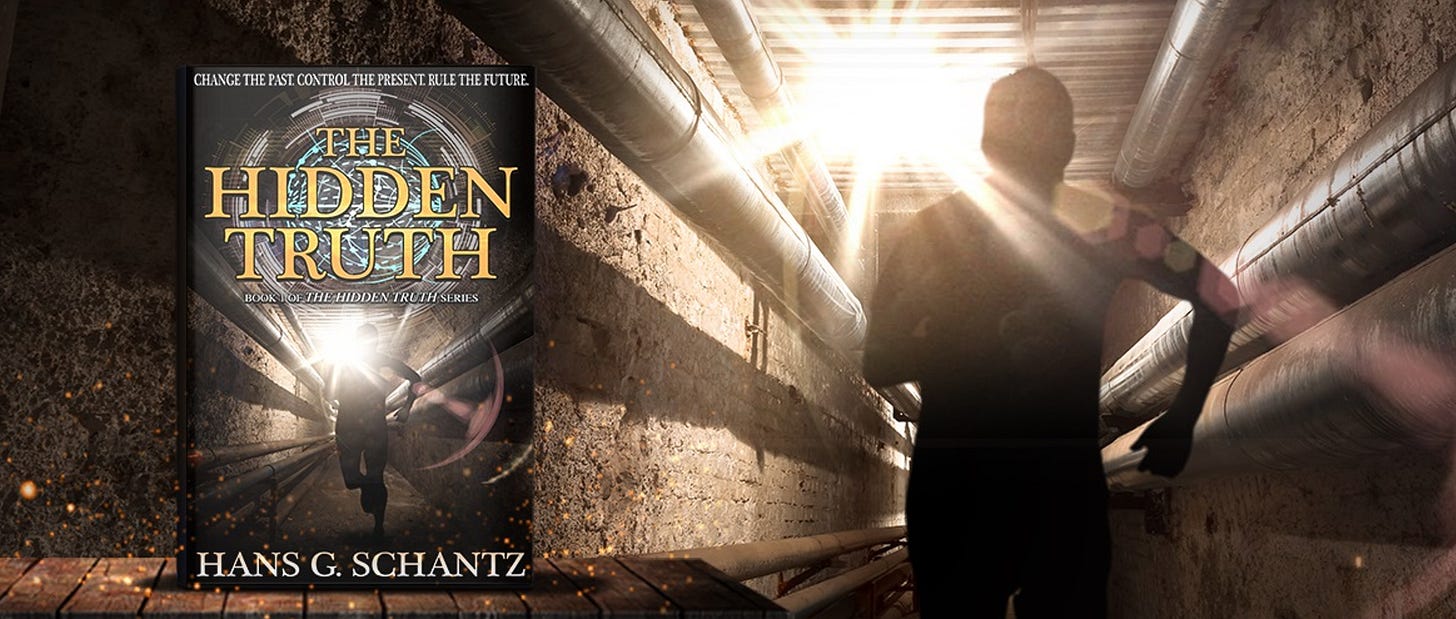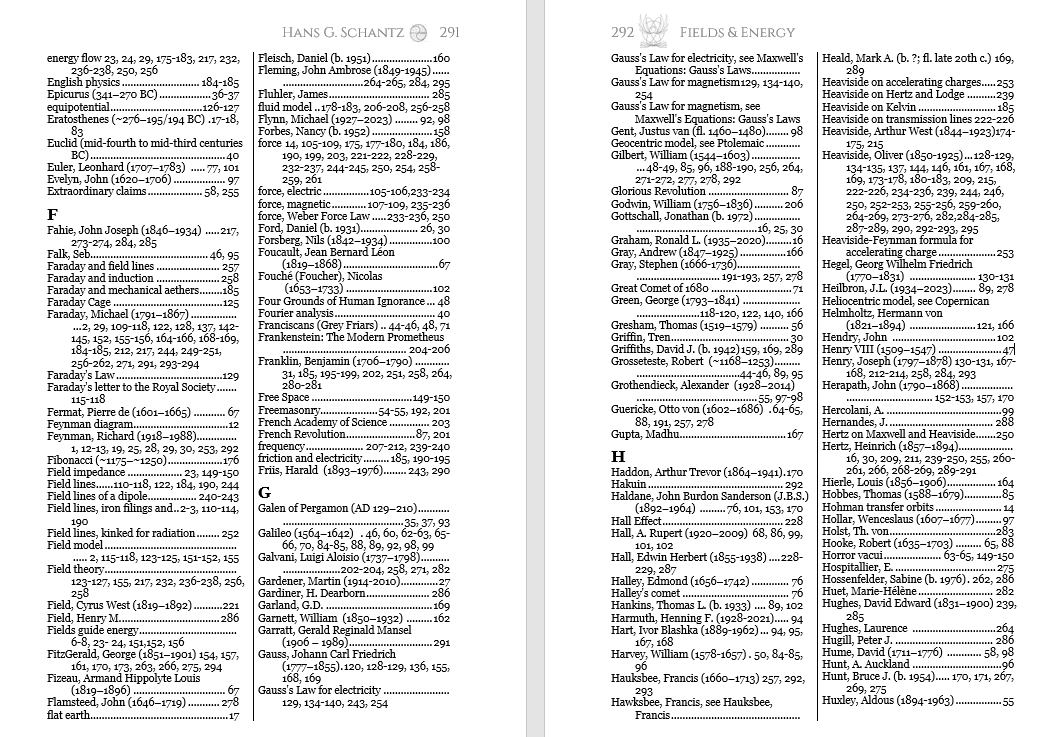In my alternate history science fiction conspiracy techno-thriller, The Hidden Truth, the protagonist, encouraged by his father, goes back to the source material to try to understand electromagnetic science through the eyes of the men who first figured it out.
His remote Appalachian hometown was once home to a technical college that failed, becoming a community college, but the Tolliver Library on campus retains a superb collection of nineteenth and early twentieth century technical books. When the protagonists reads through this early source material, he finds anomalies in the books he reviews. For instance, reading the 1909 Electric Waves by William Suddards Franklin, the protagonist finds a footnote on page 115 that declares:
The theory of wave distortion in transmission lines and cables was first developed by Heaviside. The second half, pages 306-454, of Heaviside's Electromagnetic Theory, Vol. I (London, 1893), is an extremely simple and interesting discussion of this subject. In his forthcoming third volume, Heaviside will elaborate on his remarkable theory of wave interference whereby electric waves bounce off each other. This ingenious discovery promises to unlock similar valuable insights.
He shares this insight with his electrical engineer dad who scoffs, “Electromagnetic waves don’t ‘bounce’ off each other.” And sure enough, when his father checks the online scans, no such nonsensical claim appears.

The protagonist goes back to the Tolliver Library and confirms the footnote is as he remembers it, and he checks the index of the book against the online scan.

The index of the Tolliver Library version lists references to Heaviside’s Electromagnetic Theory on pages 113 and 115. The online scan shows only page 113. And yet, the redacted footnote on page 115 of the online scan still refers to Electromagnetic Theory a reference that is missing from the index.
It’s a smoking gun.
The conclusion is obvious. The online scan has been tampered with. Someone removed a key reference to Heaviside’s Electromagnetic Theory from page 115 and the corresponding index entry, overlooking the fact that the truncated footnote still mentions Electromagnetic Theory. What else could it be?
Something is WRONG with the index!
It makes a great inciting incident to kick off my story, magnified greatly for readers who go to the trouble to check out the online scans for themselves and discover that yes, indeed, the online scans they are reviewing show the same curious anomaly that the protagonist discovered.
Indexing Fields & Energy
Not to disappoint my fans who appreciate the depth of research behind The Hidden Truth, but any real index is full of errors like that one. And if that entry had been correct, I’d have found something else to serve as my smoking gun. No one who has ever been involved in indexing a book would be the least bit surprised that a subtle error like that could creep into an index. The challenge is to try to minimize errors and oversights of that kind and produce a reasonably comprehensive index that will be of value to the reader. And that brings me to the subject of today’s post, the indexing of Fields & Energy Book I.
In these days of online and electronic books, an index may appear superfluous. An electronic scan can instantly direct a reader to the appearance of any particular character string anywhere in a hundred-thousand-word tome with far greater speed and ease than looking up terms in an index. Yet, if you are going to write a non-fiction book and deliver an end product worthy of the undertaking, an index is an essential component.
So, that’s what I’ve been working on behind the scenes since the end of June.
I got distracted by various podcast appearances, getting my crowdfund up and running, and dealing with everything from credit card disputes to being de-platformed from Kickstarter for the second time in a row, but at least a solid man-month of my (part-time) efforts since the end of June have gone into the indexing of Book I.
The old school approach to indexing is to task a talented minion to do the job for you. And while The Society for Post-Quantum Research is indeed blessed with some very talented minions, they are currently busy working on other more important tasks from which I do not want them distracted. It’s been a couple decades since last I indexed a book, and I honestly forgot what an ordeal it can be. AI tools have been helpful, but they are not yet up to the task.
I’m pleased to report that the rough draft of the index is done…
…but now the quality control, proof reading, and formatting begin. And once the index is done, I have all the proofreader’s comments to address throughout the entire book. I was aiming to have books in hand by the beginning of September. That may be sliding. I aim to provide an update on the progress, weekly.
If you might be interested in getting involved in the indexing of Book II in exchange for a signed hardcover, and eventually, a signed leather-bound edition of the book (when available), send me a direct message. I can always use more minions.
That’s all for now. More podcast appearances and interviews are in the works, so there will be even more to report very soon.
Enjoyed the post, but maybe not quite enough to spring for a paid subscription?
Then click on the button below to buy me a coffee. Thanks!
Follow Online:
You may follow me online in other places as well:
Telegram: 𝔸𝕖𝕥𝕙𝕖𝕣𝕔𝕫𝕒𝕣'𝕤 𝔸𝕖𝕥𝕙𝕖𝕣𝕤𝕥𝕣𝕖𝕒𝕞
Gab: @aetherczar
Twitter: @aetherczar
Amazon: Hans G. Schantz








Dang. A week ago, I'd've been your man.
Obscenely well-done and time-expensive index, looks like. Kudos. That's not "free".
(But...a curiosity...along the lines of free, something I've been wondering about...can't the LLMs do indexes, a least a first crack for verification, extension? )